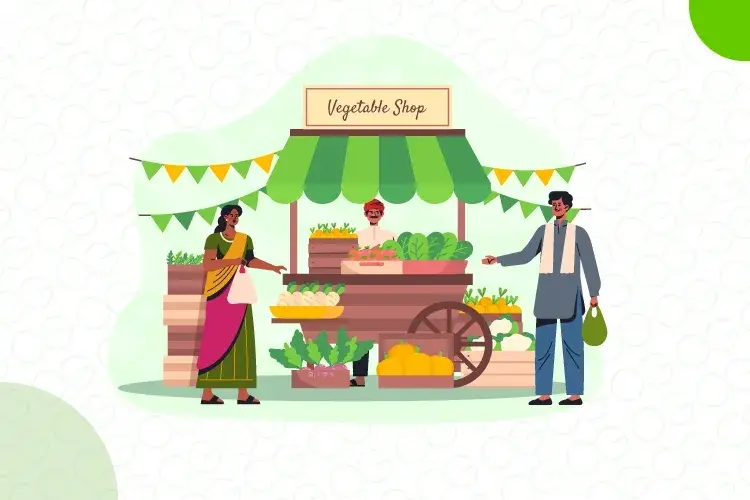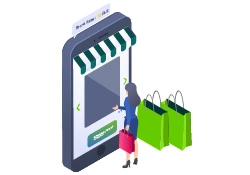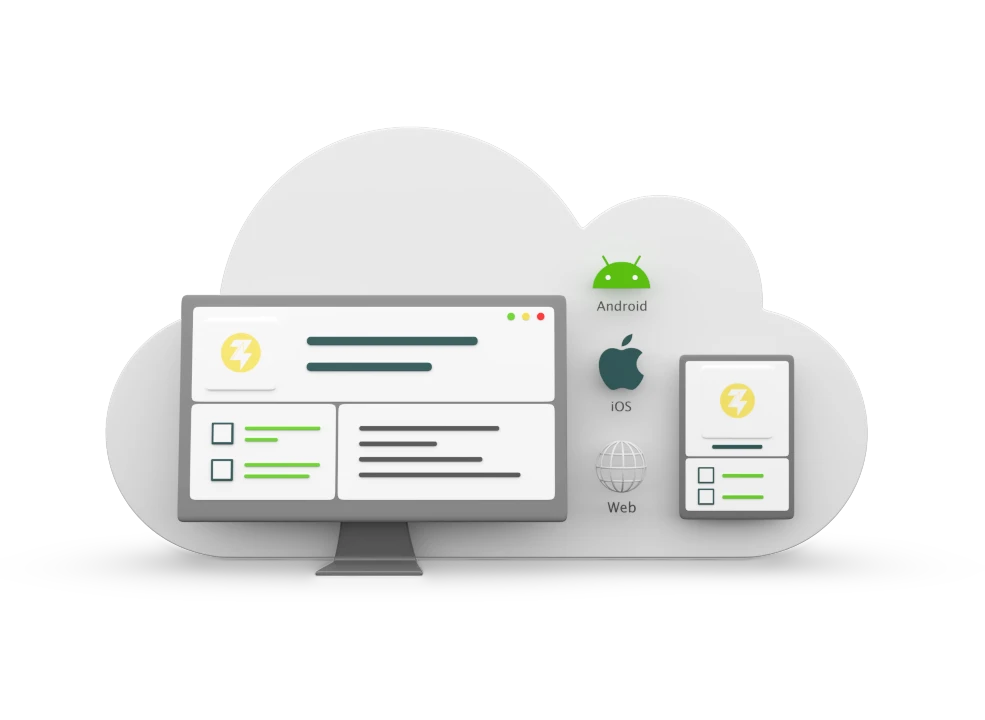POS for Rural Retail: Bridging the Digital Divide with Affordable, Offline-Capable Systems

In a dusty village shop, where every transaction was once scribbled into a fading notebook, a quiet revolution is taking place. The scene is familiar: a small general store nestled at the edge of a farm road, where customers pay with coins or run a tab for next month’s harvest. For generations, these shops have served as the economic lifeblood of India’s rural heartland reliable, enduring, and entirely analog. But the change is stirring.
Rural retail forms the very heart of India's everyday commerce, serving millions of small shops and kiranas that cater to local communities across vast regions. Yet, despite their importance, these retailers have long stood on the wrong side of the digital divide.
While urban shops are moving swiftly with UPI payments, real-time inventory dashboards, and automated GST reports, rural retailers often operate with pen and paper, relying on memory. The gap is economic, educational, and infrastructure. The question is not if these shops should digitize, but how?
That’s where "POS for Rural Retail" steps in. Not merely as software. Not just a tablet on the counter. But as a force of empowerment reshaping the rural economy with tools designed to work offline, in low-power conditions, in the language of the shopkeeper, at a price they can afford.

Rewrite the ledger with Ginesys—bring smart retail to rural India
The Ground Reality: Challenges Faced by Rural Retailers
Let’s start with a simple question: What happens when there’s no internet?
In rural India, that’s not a hypothetical. A 2023 report by the Telecom Regulatory Authority of India (TRAI) showed that while 98% of India has telecom coverage, only 37% of rural households have reliable internet access. Many rely on patchy 2G or occasional smartphone hotspots. In such environments, cloud-only POS systems face significant challenges.
And then there’s electricity. According to the Ministry of Power, more than 24,000 villages still experience power outages of over 15 hours per day during peak summer months. In these conditions, digital systems must be offline-capable and consume minimal power—or risk becoming unusable.
Now imagine billing in this context. Most shops rely on manual registers. The result? Frequent errors, lost records, no real-time inventory, and no ability to reconcile sales with purchases. One missed entry could mean days of confusion.
How do you track credit when there’s no digitized customer record? Most rural retailers rely on memory or small handwritten IOUs. There’s no visibility into who owes what, no reminders, and no systematic follow-up. When credit is your main customer retention strategy, this inefficiency quietly chips away at profit margins.
Then comes compliance. Filing GST? Generating monthly reports? These tasks are often outsourced—at a cost. A KPMG India survey revealed that 64% of small rural retailers depend on external accountants, not by choice, but because they don’t have systems that generate compliant data.
Layered on all this is the human factor. Most shopkeepers have never used a computer. A touchscreen POS with English instructions and dropdown menus is as alien as a satellite. Digital literacy among rural retailers remains low: the National Digital Literacy Mission estimates only 38% of rural adults have basic digital skills.
So, what do you do when the very tools designed to help are out of sync with reality on the ground?

8 Must-Haves for a Rural-Friendly POS System
Imagine this: a kirana store owner in a remote village in Maharashtra runs her shop with a notebook, a calculator, and a head full of numbers. Rain knocks out the electricity. Mobile networks sputter. And yet, the store must run uninterrupted. In this setting, what kind of point-of-sale system can thrive?
To serve rural India effectively, a POS system must be more than a digital cash register. It must be a resilient, adaptive business partner designed for real-world constraints. Here's what that looks like:
- Offline Capability: Connectivity cannot be assumed. An effective POS must function offline—recording sales, generating invoices, updating inventory—and sync seamlessly when back online. Without this, it’s a digital liability, not a solution.
- Mobile-First or Tablet-Based: Smartphone penetration in rural India reached 67% in 2023, according to Statista. Laptops and desktops are costly and often impractical. POS systems must be optimized for Android or basic tablets, with touch-first interfaces and lightweight apps that don’t eat storage or demand high RAM.
- Low Infrastructure Requirement: Electricity in rural areas remains patchy, with states like Uttar Pradesh still facing regular outages. A POS that relies on continuous power or stable broadband is out of place. It should run on battery-powered devices, work without Wi-Fi, and handle syncs in bursts when connectivity allows.
- Multilingual Interface: Over 88% of rural Indians prefer local languages when accessing digital tools, according to a KPMG-Google report. A POS system must support interfaces in Hindi, Marathi, Bengali, Tamil, and beyond—not just for ease, but for trust.
- Digital Inventory Tracking: Stockouts cost small stores sales and credibility. A rural-friendly POS must track inventory automatically with every sale and alert store owners before they run out. When integrated with purchase data, it empowers smarter buying, tighter control, and reduced waste—especially in perishable categories.
- Seamless UPI and Mobile Payment Integration: India recorded 13.3 billion UPI transactions in May 2024 alone, according to NPCI. A POS that can scan QR codes, accept UPI, and reconcile transactions instantly enables even the smallest store to compete in a cash-light economy.
- GST-Ready Reporting Without Jargon: Compliance is often a hurdle, not because store owners lack intent—but because systems talk in complex codes. A rural-friendly POS must generate GST invoices, monthly summaries, and reports in plain, actionable language.
- Background Data Syncing: Offline first, online smart—that’s the ideal. When a POS comes back online, it should auto-sync: inventory levels, daily sales, payment logs, and tax records. No manual uploads and no lost data, just invisible efficiency.

Turn every shop into a smart, rural powerhouse with Ginesys
Big Possibilities: What Happens When You Digitize a Kirana Store
What changes when a local store in a village let’s say in Barmer, Rajasthan adopts a smart POS system?
Let’s sketch before and after.
Before
- Stock levels tracked in memory
- Invoices written by hand, if at all
- No clear record of what sells, and when
- No ability to accept digital payments
- Unclear pricing history with suppliers
- No GST compliance, limited growth prospects
After
- Real-time Stock Visibility: Know what’s running low before customers do.
- Instant GST Invoices: Printed or digital, on the spot. Legal, professional, and ready for audits.
- Smarter Supplier Negotiation: With exact sales data, store owners can demand better deals and avoid overstocking slow movers.
- Actionable Sales Insights: See that biscuits spike at 5 p.m., or that detergent lags. Make decisions that match demand.
- UPI = More Sales: Accepting QR payments means impulse buyers don’t walk away. According to NPCI data, digital payment adoption boosts sales by up to 20% in small retail stores.
- Receipts Build Trust: When customers get a bill, confidence increases. They come back—and recommend the store.
- Future-Ready for Marketplaces: With digitized inventory and sales logs, the store can plug into B2B platforms or e-commerce integrations. That’s a step into national retail networks.
The Ginesys Edge — Enabling Retail at Every Corner of India
What does it take to serve 1.4 billion people across a nation as vast and diverse as India? The answer lies not only in ambition but in the ability to adapt technology for every retail reality—from sprawling malls in Tier 1 cities to the compact kirana stores that line village streets. Imagine a rural shopkeeper in Satna, Madhya Pradesh, juggling cash sales, handwritten ledgers, and erratic power cuts. Now imagine that same shopkeeper running a GST-compliant, digitally integrated store—accepting UPI payments, tracking inventory in real-time, and fulfilling WhatsApp orders. This is happening, and Ginesys is powering it.
Ginesys, India’s leading retail tech company, is charting an audacious vision: to empower every format of Indian retail. Whether it’s helping a fashion giant streamline multi-city operations or enabling a rural grocery store to accept UPI payments, Ginesys is building the digital backbone for Indian commerce—scalable, reliable, and remarkably inclusive.
Take Zwing POS by Ginesys, for example. This cloud-based, mobile-first point-of-sale solution is purpose-built for today’s dynamic, hyperconnected market. Designed with affordability and flexibility in mind, Zwing brings the power of retail tech to businesses of all sizes—especially those traditionally underserved by legacy systems. And with offline capability now integrated, store owners in network-constrained geographies are no longer left behind.
Zwing is also fully compliant with India’s Goods and Services Tax (GST) framework, ensuring seamless tax management. It’s integrated with the Unified Payments Interface (UPI), which saw over ₹18.23 lakh crore worth of transactions in June 2024 alone, according to NPCI data (source). That means retailers can confidently process digital payments, even in cash-dependent regions—no compromises, no complexity.
But what if you're running a high-volume, large-format store that needs a more robust setup? Enter Ginesys Desktop POS. This powerful platform has been a cornerstone of enterprise retail in India for over a decade. It’s now offline-first, ensuring business continuity even during connectivity outages—critical for stores processing hundreds of transactions an hour.
Engineered for an intuitive user experience, Ginesys Desktop POS is as responsive on the backend as it is smooth at checkout. Naturally, it is GST-compliant, UPI-ready, and built to scale. Today, it powers thousands of retail outlets across India—from department stores and supermarkets to specialty retail chains.
Consider this: a fashion retailer in Delhi using Ginesys Desktop POS can operate seamlessly across multiple stores, sync inventory in real time, and roll out promotions across locations—all while ensuring compliance with India’s evolving tax and payment ecosystem. At the same time, a small beauty store in rural Maharashtra can leverage Zwing POS on a smartphone to accept UPI payments, manage inventory, and generate e-invoices—even with patchy internet.
That’s the Ginesys edge—deep-rooted retail technology experience fused with the vision to democratize innovation. It’s not about offering one-size-fits-all solutions. It’s about designing for the vast spectrum of Indian retail and meeting businesses where they are—whether in high-rise malls or dusty village lanes.
Because true digital transformation in India won’t happen at the center alone—it must happen at every corner. And that’s exactly where Ginesys is headed.

Empower your store today — go digital with Ginesys Zwing
The Multiplier Effect — Digital POS for Economic Ecosystems
So, what happens when a single rural store becomes digital? The transformation is exponential. Take FMCG supply chains: With a digital trail of sales data, retail stores can establish trusted relationships with wholesalers as well as with national brands, the end result often being better margins and priority deliveries.
Conventional lenders don’t know how to have confidence in unregistered retailers. But with digital transaction histories, even small shops come on the radars of banks and NBFCs. These kinds of data-sharing with consent are already possible with platforms such as IndiaStack and Account Aggregator frameworks, making credit access more efficient for expansion or emergencies.
POS systems can also simplify government subsidy management. Schemes such as the Pradhan Mantri Garib Kalyan Anna Yojana (PMGKAY) need clear documentation for the delivery of food grains. A digital POS can validate transactions, stop leakages, and create trails—supporting both compliance and efficiency.
Beyond logistics and subsidies, a POS also offers connectivity to loyalty programs and e-commerce. In states like Odisha and Bihar, rural shops with cloud POS have begun acting as pickup points for online marketplaces or accepting WhatsApp orders. It’s bringing omnichannel retail to villages where traditional infrastructure still lags.
And let’s not overlook employment. With digital POS comes upskilling, shop assistants learn to manage inventory software, digital payments, and customer analytics. In effect, these roles become stepping stones to higher digital literacy and job mobility.
These digitally enabled stores, over time, become community hubs not just places to shop but to obtain services, information, and even micro-entrepreneurship opportunities. The ripple effect is undeniable. What begins as a POS terminal becomes a single node in an immensely bigger system - a key to the world of modern commerce, inclusion, and growth.

Breaking the Myths - Why POS Isn’t “Too Complex” or “Too Costly”
Let’s face it: the biggest existing obstacle to POS adoption in rural retail is not infrastructure, it’s misinformation. Let’s look at some of the common POS concerns:
- “We can’t afford it.”: A valid concern until you look at the numbers. Today, cloud-based POS systems can cost as little as ₹500–₹1,000 per month often less than the price of a new smartphone. And with Ginesys One, you don’t need bulky hardware. Our POS solutions run smoothly on Android phones or basic tablets - devices already used by thousands of retailers across India.
- “What if it stops working without internet?”: Modern POS isn’t built like a web browser. Leading systems today now offer offline-first architecture, which lets users work when the internet isn’t available and then sync data once it is. Zwing by Ginesys makes sure that all billing, inventory, and customer transactions go on seamlessly, even in complete offline mode.
- “I don’t understand tech.”: Here’s a reality check: if you can use WhatsApp, you can run a POS. Current interface is designed for the average user. Ginesys POS is built for everyone – with big buttons, easy to follow navigation, multiple regional languages, and helpful onboarding. It’s designed to feel natural from day one, regardless of your tech comfort level.

From ledgers to lightning-speed POS - switch with Zwing
Final Thoughts: From Survival to Scalability
POS systems in rural retail are no longer a luxury or a nice-to-have. POS systems are redefining access, efficiency, and scale. A digitally empowered kirana store is setting the stage to grow, hire, expand, and compete. And as rural consumers grow increasingly digitized, their expectations are changing as well. Why shouldn’t rural shopkeepers meet that demand on an equal footing?
For retailers ready to cross the threshold, solutions such as Zwing by Ginesys provide a customized and dependable way forward, offline-ready, mobile-first, and built for the realities of rural commerce.
Rural retail is evolving - don’t get left behind. Start your digital journey with Zwing by Ginesys today.
